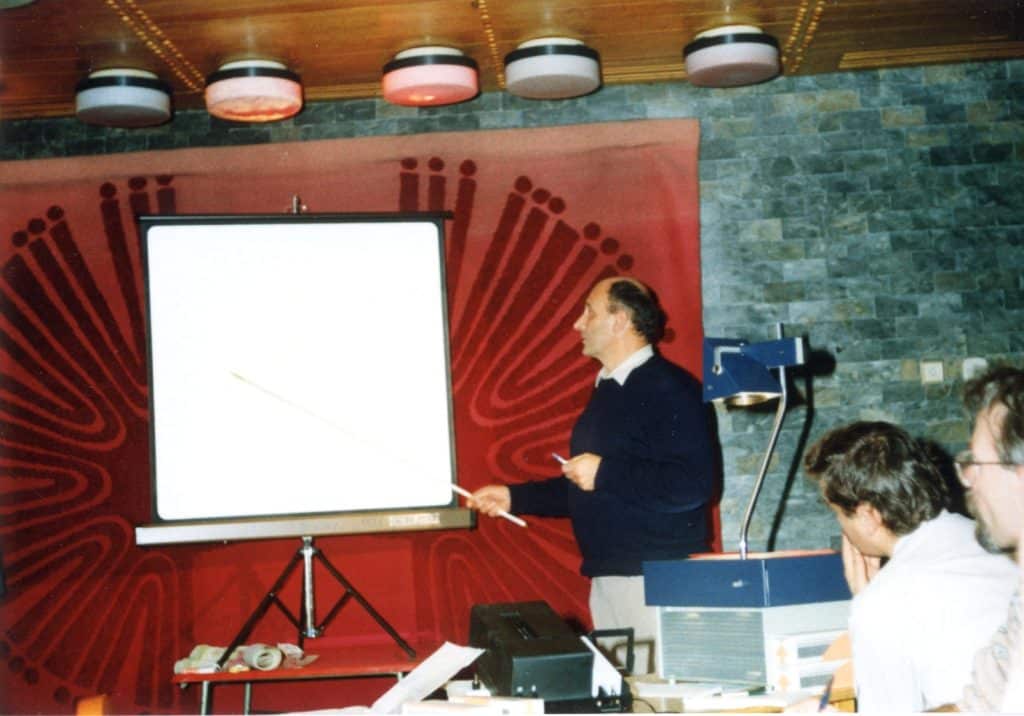Axel Plešingr (14. 7. 1933 – 1. 4. 2024)
On Easter Monday, April 1, 2024, after a short illness, Prof. Axel Plešingr has passed at the age of ninety. He was our colleague from the Institute of Geophysics of the Czech Academy of Sciences (CAS) and a father of European and, without exaggeration, world seismometry.
What was the path of Axel Plešingr to this glorious title of “founding father” of broadband seismometry in Europe and in the world? Far from direct: the young specialist in the electronics joined the Institute of Geophysics of the Czechoslovak Academy of Sciences, founded in the early 1950’s, and was attracted by an ambitious space research project in the Department of the Ionospheric Research. But he soon descends from the heights of the atmosphere down below the Earth surface to fundamentally change the way seismologists listen to the Earth’s pulse. He replaced the by-then widespread and traditionally accepted registration of seismic motions by narrow high-frequency passes with broadband recording. Axel Plešingr built a broadband system not only at the observatory of the Institute of Geophysics near Kašperské Hory in South Bohemia (KHC), but also in Książ in Silesia, Poland (KSP), and, in addition to establishing a databank of broadband records from these two European sites, he made it possible to study the structure of the crust in Central Europe from the dispersion of long-period surface waves. His broadband system was unique at the time and inspired many seismologists worldwide. Today, broadband registration is a standard tool in seismology and the map of Europe and the world is dotted by such stations; anyway, the old records from the Kasperské Hory and Ksiaz observatories provide an invaluable insight into the world’s earthquakes that occurred in the days of broadband prehistory.
Axel Plešingr was not just a world-renowned expert in seismometry, he went from being a technical specialist in seismic wave registration to a seismologist par excellence. His perfect understanding of seismic data, his ability to accurately distinguish what is the nature and what is an artifact of the instrument on a seismogram, led to fundamental studies on the time functions of regional earthquakes, on the possibilities of studying the anisotropy of the lithosphere, and on the possibilities of automatic type analysis for distinguishing between natural earthquakes and artificial seismic phenomena. As a recognized expert in seismometry, he has helped introduce modern methods of data registration and processing both in Europe and father beyond its frontiers as in Iraq. His teaching and his role as an expert in various seismological schools and courses organized by scientific associations such as the European Seismological Commission or the International Union of Geodesy and Geophysics cannot be overlooked.
In his scientific commitment, Axel Plešingr was rigorous and unrelenting in professional matters, but at his core he was kind and always willing to help in advice and action. He did so with his peculiar humor, and all of us who were in contact with him at the Institute of Geophysics liked him for it. In our memories, he remains with us.

Ing. Axel Plešingr (standing) with his student and later colleague Josef Horálek at the VBB (very broad band) station (archive of the Institute of Geophysics of the CAS)

Ing. Axel Plešingr during the lecture (archive of the Institute of Geophysics of the CAS))
Jan Šílený

